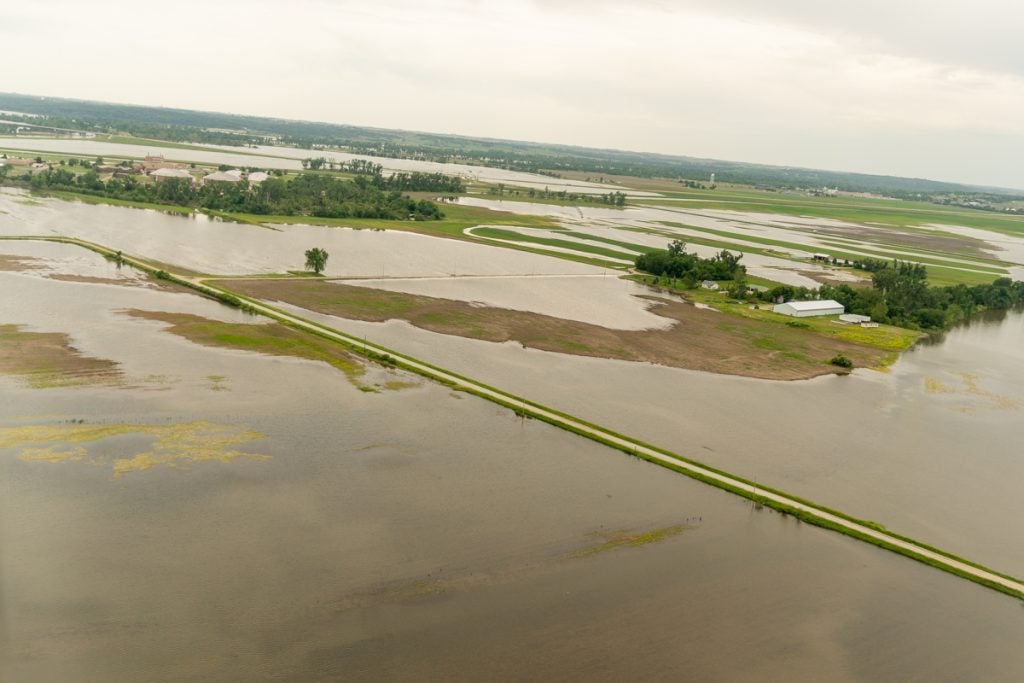Climate change poses a multitude of financial risks and financial leaders are increasingly calling for the measurement, disclosure and mitigation of these risks.
The Federal Reserve recently highlighted climate change in its annual financial stability report, warning that climate-driven weather events could cause price instability and other significant financial system vulnerabilities. The Fed’s report adds momentum to a growing wave of attention being paid to climate-related financial risk.
Finance sector increases climate focus
A September report by a subcommittee of the U.S. Commodity Futures Trading Commission also highlighted the risks of climate change to multiple sectors of the U.S. economy and the financial institutions that serve them. President-elect Joe Biden is considering policy actions to address these risks, including directing the Securities and Exchange Commission to make climate-related financial disclosures mandatory for all publicly listed companies.
Meanwhile, several major banks including Barclays, JPMorgan Chase and Morgan Stanley have made commitments to align their portfolios with the Paris Agreement and net-zero emissions by 2050, and others are joining initiatives to refine measurement tools used to assess financial climate risks.
Still, the vast majority of financial institutions that serve agriculture — one of the sectors most vulnerable to climate change — have yet to take meaningful action. This includes large commercial banks, regional and community banks, and government-sponsored enterprises such as the Farm Credit System and Farm Service Agency.
Climate risk hits home for agricultural lenders
Agriculture is among the most at-risk sectors to climate change as it depends on natural resources, such as soil and water, and predictable weather, such as temperature and precipitation. Crop and livestock production face both acute climate risks, such as increasingly severe storms, and chronic climate risks, such as increasing droughts and heat.
The major flooding that took place across the Midwest in 2019 demonstrated the financial vulnerabilities of the farm financial system to acute climate impacts. Following the devastation to crop production brought by the floods, the portion of the region’s agricultural loans reporting “major” or “severe” repayment problems reached its highest level in 20 years.
The impacts of climate change on the agricultural lending sector are only beginning to be understood, but all signs point toward substantial risk for lending institutions.
In a July 2020 climate stress test, Rabobank — one of the largest commercial lenders in U.S. agriculture — found that increased water stress could have significant impacts on their food and agriculture portfolio in the U.S. and Australia. A recent analysis by Four Twenty Seven, an affiliate of Moody’s, found that climate change will drive increasing water stress on agriculture. The analysis found that by 2040, nearly one-third of the world’s agricultural area will be affected by high water stress.
Another financial climate risk assessment conducted by an anonymous bank in collaboration with the United Nations Environment Program Finance Initiative found that, by 2040, a business-as-usual emissions scenario could cause revenues for the bank’s agricultural borrowers to drop by 12-22% and cause the bank’s agricultural loan defaults to increase by 10-15%. This is especially worrisome as nearly half of all U.S. agricultural loans come from lenders with at least one-quarter of their portfolios made up of debt-to-farm operations — presenting concentrated exposure to losses from severe weather events. Climate change poses a multitude of risks to the agricultural finance sector. Here's how to mitigate those risks. Share on X
The path forward for a resilient agricultural economy
Fortunately, there are opportunities for the U.S. agricultural lending sector to act. A rapidly growing set of collaborative initiatives and physical climate risk financial assessment tools can help the sector get up to speed.
One such initiative, banking pilot projects run by the UNEP FI Task Force for Climate-Related Financial Disclosures, developed a framework for banks to assess physical climate-related financial risks. Nonprofits including Ceres and Environmental Defense Fund are also engaging with banks on climate-related risks and opportunities.
A recent EDF report, Financing Resilient Agriculture, details how agricultural financial institutions can create new products and programs that help farmers transition to more climate-resilient production systems. Rabobank has identified financing and facilitating this transition as a key emerging opportunity.
As farmers face unprecedented weather and economic challenges, there is no more time for the agricultural finance sector to wait to address climate risk and invest in solutions that make crop and livestock production more resilient.
We need swift and bold leadership to put the U.S. agricultural economy on a positive trajectory, for the farmers, financial institutions and all who depend on this vibrant sector.










